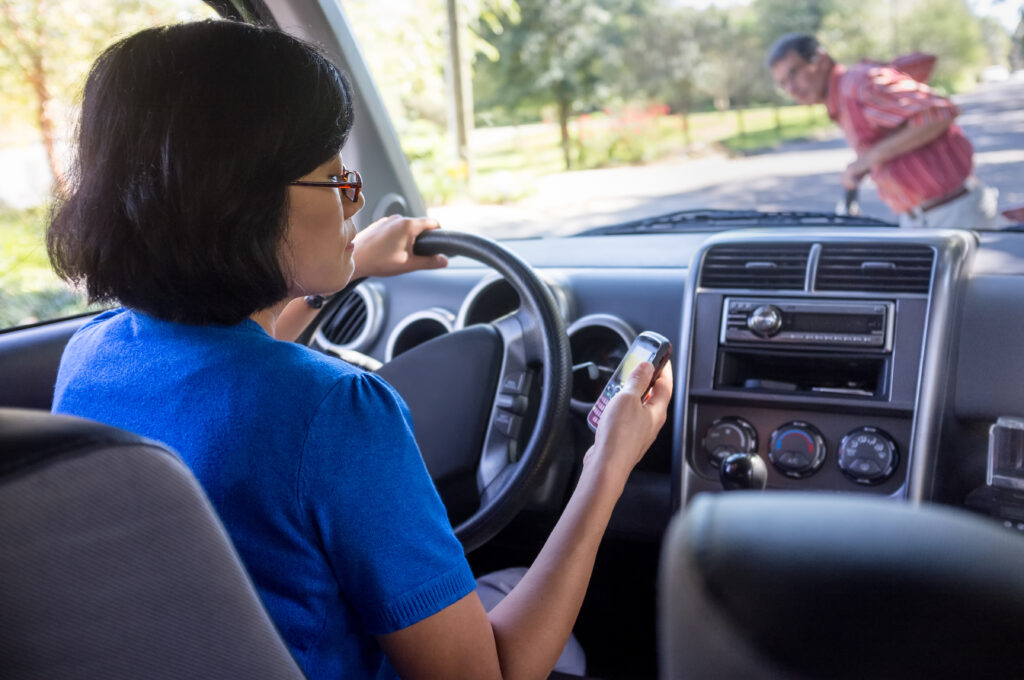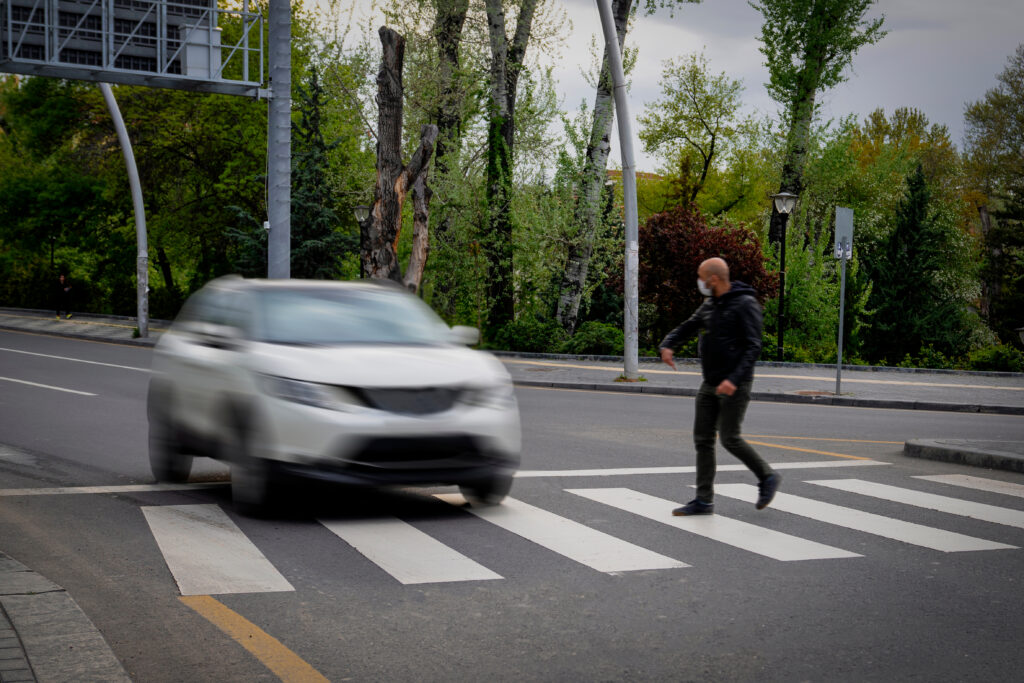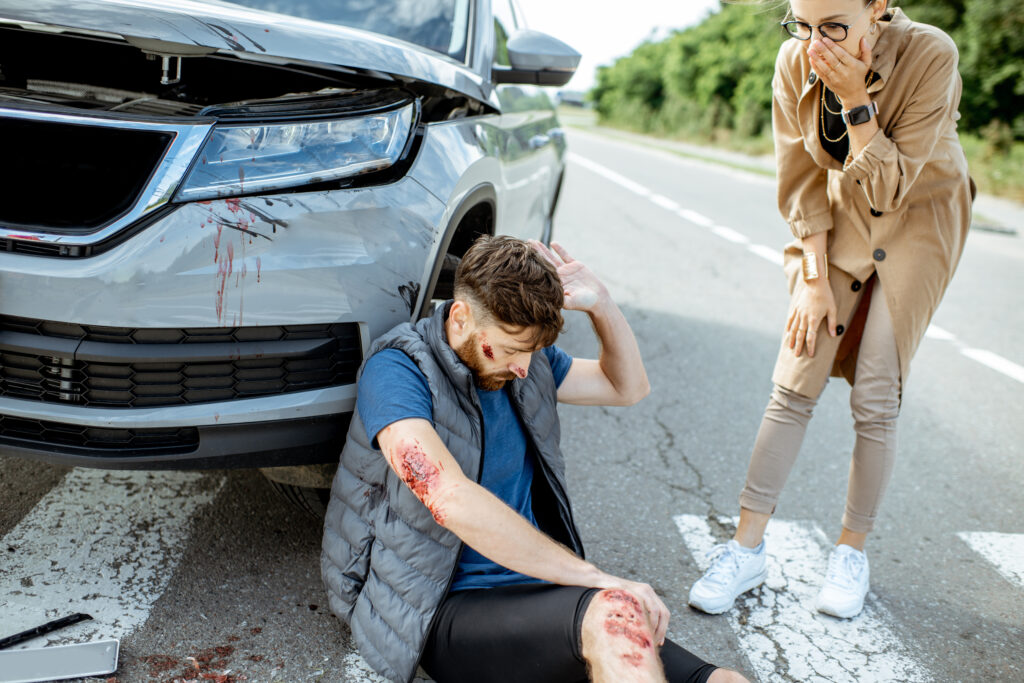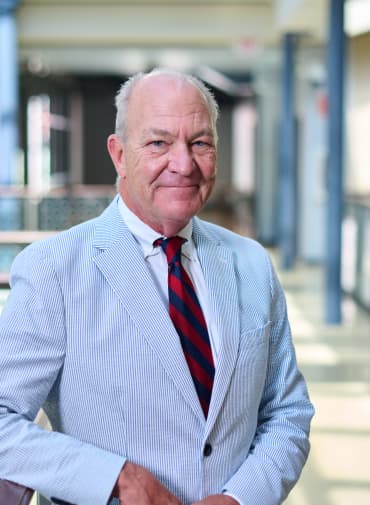When a car strikes a person, that person may suffer numerous injuries and financial losses. Some people may even lose their lives. There are numerous causes of pedestrian accidents. Many of them fall on distracted driving or other mistakes that drivers make. There are some situations where the pedestrian is at fault as well. Learn more about the most common causes of pedestrian accidents to get a better idea of what legal rights you may have in your case with the help of an experienced pedestrian accidents lawyer in St. Louis.
Common Causes of Pedestrian Accidents
Pedestrian accidents occur at an alarming rate. The U.S. Centers for Disease Control and Prevention states that one in six people who died in a car accident was a pedestrian. They also report that an estimated 104,000 pedestrians visited the emergency room after cars struck them. That is an alarming figure of injuries occurring by people simply walking. The following are some of the most common reasons these injuries occur.
Distracted driving

Distracted drivers are looking at their phones, eating, or not paying attention to the roadway. The U.S. National Highway and Transportation Safety Administration shares that distracted driving alone caused the death of 3,522 people in the country in one year (that includes all types of fatal car accidents).
A person not paying attention to the road constantly puts others at risk. They cannot react soon enough when road conditions change, such as when a person enters a crosswalk. They may not see someone standing in a corner because they are looking at their GPS. Any activity that diverts a person's full attention from the road is considered distracted driving.
Speeding
Speeding is another common cause of pedestrian accidents. When a car is moving at an excessive speed, it is difficult, if not impossible, for the car to stop when there is a sudden change in road conditions, such as a person stepping out onto the roadway. Speeding can also make it harder to control the car's movement, making it harder for the driver to stop the car properly.
Speeding is a preventable reason for injury and loss. Speeding is a form of reckless driving that can cause serious injury and loss to victims because of the amount of force involved in the accident. The faster a car grows, the more force that occurs and the more significant the injuries are likely to be.
Difficulty seeing the person
There are situations where the driver of a car may have difficulty seeing the pedestrian. This can occur if the pedestrian is wearing dark clothing or there is a lack of visibility and light on the crosswalk. This can be due to the city's lack of proper lighting in some situations. Other times, the driver remains at fault because it is their responsibility to ensure that they can see the roadway properly to drive a car.
An example here is fog, snow, or rain. In these situations, it may be harder for the driver to see someone walking across the street. However, that is not an excuse for striking a driver. If the roadway is unsafe to drive on, the driver should not be on the roadway. Poor visibility does not excuse the driver from being at fault for what has occurred.
Impaired drivers
An impaired driver may be incapable of properly stopping a vehicle. Impairment may include the use of alcohol, drugs, or prescription drugs, as well as any type of over-the-counter medication that alters a person's ability to drive safely. Impairment causes a slowdown of a person's reaction time. Impaired driving means that the person behind the wheel cannot stop the car fast enough when a person is on the roadway.
It also means that they cannot handle the movement of the car properly. This may lead to the driver moving off the roadway onto a sidewalk, for example, striking the person walking. Impairment is a common reason for driving accidents with pedestrians in all situations, according to the ASU Center for Problem-Oriented Policing.
Driver fatigue
A tired driver is nearly as dangerous as a person who is impaired. They cannot move the vehicle properly and fast enough to react to the person in the roadway. Fatigue dulls a person's ability to focus on what is occurring and make quick changes when necessary.
Additionally, a person who falls asleep behind the wheel of the car, even when this happens just for a few moments, is exposing a wide range of people on the road with them to risk. The vehicle can strike a person on a sidewalk, in a driveway, or a parking lot without warning, especially if the driver accidentally presses the gas when doing so.
Pedestrian Fault
There are situations where the pedestrian may be at fault for the incident. This includes situations where the pedestrian may be jaywalking or walking across the street in an area not legally designated as a crosswalk. While drivers are still responsible for stopping when they see a person in the roadway, as the pedestrian always has the right of way, this can cause unexpected instances.

One growing problem is pedestrian distraction. A person walking down the street looking at their phone may not be where they should be. They may unexpectedly enter the street or roadway and step in front of a vehicle. Again, this accident does not automatically mean the driver is not at fault. Drivers are responsible for controlling their vehicle in all situations, including situations like these.
For example, that becomes hard to do when a child chases a ball out into the street or when a person runs across the street unexpectedly to catch a bus into oncoming traffic. These unpredictable actions increase the risk of accidents, emphasizing the need for pedestrians to exercise caution and follow traffic rules to prevent potential harm and complications in the event of an accident.
Aggressive driving
Aggressive driving occurs for many reasons, including stressed individuals and those with too much to do in a limited amount of time. Traffic and backups and concerns like construction can also make a driver agitated, leading to aggressive driving. In such situations, drivers may behave like tailgating, weaving in and out of traffic, or engaging in excessive speeding. Understanding the triggers for aggressive driving is crucial in promoting road safety and finding effective ways to address the underlying issues contributing to such behaviors.
When aggressive driving occurs, the victim is usually not the person who is frustrating the driver but an innocent bystander in this situation. Aggressive driving can include such actions as changing lanes inappropriately, speeding, or following too closely, which are dangerous actions and often lead to proof of negligence.
Inexperienced drivers
In some situations, pedestrian accidents are due to a person's inexperience behind the wheel. New drivers or those driving in bad weather may be at a higher risk of causing such an accident than others. They may not understand the traffic laws or realize they need to stop for a pedestrian in a crosswalk, even if it is unmarked. This creates a high risk of injury for any pedestrian stepping in front of a car like this or simply being in the wrong place when a new driver turns erratically.
Not slowing down in school zones
Many states implement school zones to protect people walking to and from school, especially during arrival and dismissal times. These designated school zones mandate that drivers in the area reduce their speed to 20 miles per hour and sometimes even less. This specific speed limit ensures that drivers have sufficient time to notice and come to a stop for a person walking in these zones.
A person darting through a school zone at a fast pace puts everyone on the roadway and sidewalks at risk in these situations. It is not uncommon for children to expect the driver to stop, and accidents can be fatal when the driver does not, highlighting the critical importance of adhering to school zone speed limits for all involved.
Traffic light malfunctions
Though rare, it may be possible for a traffic light to malfunction and contribute to a car accident involving a pedestrian. For instance, if a light is not operational and the driver believes they have the right of way, they may proceed into the intersection while a pedestrian is crossing the street, emphasizing the potential risks associated with malfunctioning traffic signals.
If the traffic lights are defective or installed improperly, this can significantly elevate the risk of injury for individuals in a car or walking through that intersection. Moreover, it may pose a liability risk for the city or the party responsible for that traffic signal, emphasizing the potential consequences of inadequately functioning or incorrectly installed traffic lights.
Can a Pedestrian Be at Fault for a Car Accident?

There are instances when a pedestrian may be responsible for a car collision. This can happen for various reasons, including some of those mentioned here. Typically, pedestrian collisions with a motor vehicle are not the pedestrian's fault because the car's driver is responsible for doing all they can to drive safely.
Yet, pedestrians can be negligent. If that occurs, it may mean it is harder for you, as the victim, to prove that the driver is responsible for your losses. This is a very important reason to hire a pedestrian accident attorney. Your accident attorney will work very closely with you to avoid any liability.
Sometimes, a pedestrian may be at fault for an accident because of when or how they enter an intersection. Consider these examples of when the pedestrian is required to yield to vehicles on roadways:
- If the person steps into the roadway, the vehicle is approaching at a speed that does not have enough time or distance to stop.
- The pedestrian is crossing the roadway without any traffic controls in place.
- A person crosses the road between traffic-controlled intersections, often not in a crosswalk.
In these situations, a pedestrian must stop and allow the vehicle to pass first. If they do not adhere to these rules and are subsequently struck, obtaining compensation for the resulting losses may become more challenging, underscoring the importance of pedestrian awareness and adherence to traffic regulations for their safety and potential legal claims.
What to Do If You Are a Victim of a Pedestrian Accident
The risk of pedestrians crossing the street or walking on a roadway and getting hit by a car is increasing. Between several years, pedestrian deaths on roadways have grown by a shocking 80 percent, according to the Insurance Institute for Highway Safety.
Considering how frequently these accidents occur and how devastating they can be, especially at high speeds or with larger vehicles, hiring a pedestrian accident attorney who will remain by your side throughout the process is critical. This includes providing guidance on filing a claim, developing evidence to prove your losses, and going after those responsible to the fullest extent of the law.
If you are a victim, contacting a pedestrian accident attorney is the most important step to protect your ability to receive compensation for your loss. Insurance companies may work to prove that you are at fault. Sometimes, the evidence to prove you are not at fault is hard to find. Your attorney will guide you in doing just that, verifying the extent of your losses.
Schedule a Consultation to Discuss Your Case with a Trusted Car Accident Attorney

Working with a pedestrian accident attorney protects your rights as you seek compensation for your losses. Seek out an attorney offering a free consultation to discuss your case privately but with full protection and insight. You have the right to receive compensation for the losses the other person caused you.
Set up a consultation with our pedestrian accident lawyer today to discuss your case. No matter what caused the pedestrian accident to occur in your case, you may still be eligible for compensation. Seek help from an experienced attorney with a proven track record of pursuing even the most challenging cases. Learn more about what your legal rights are by contacting us today.
